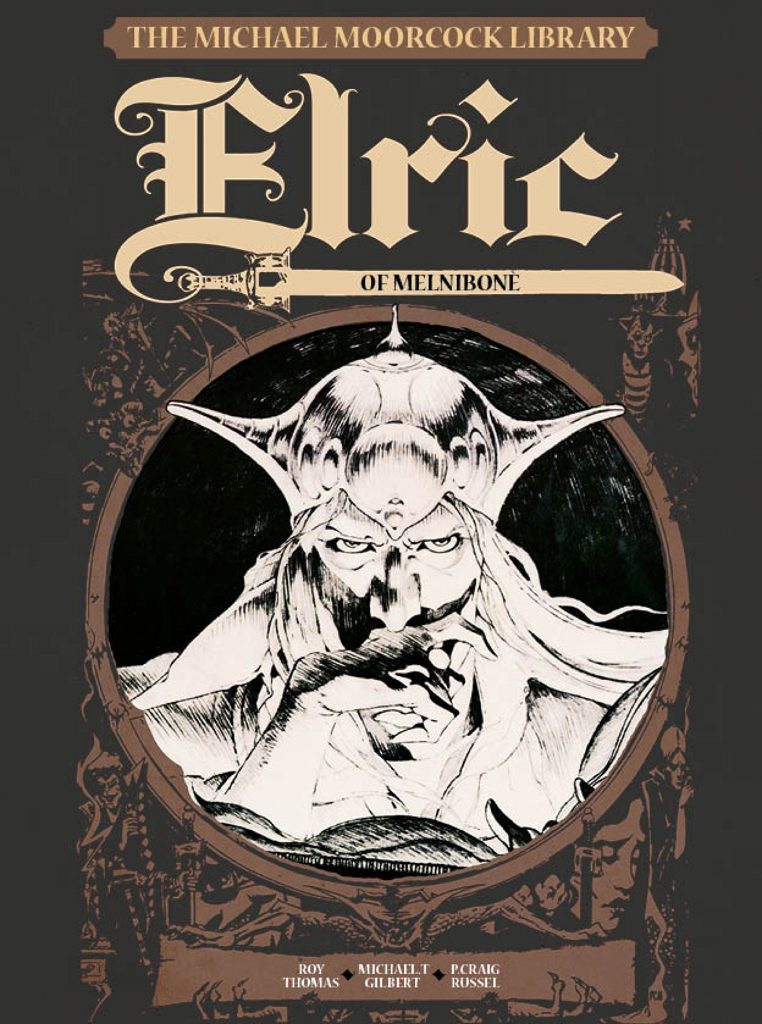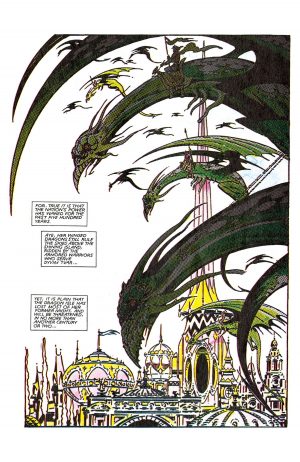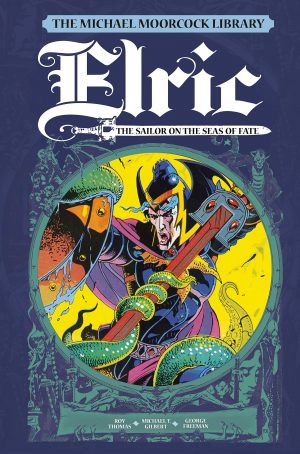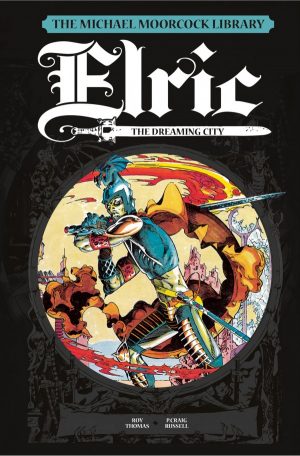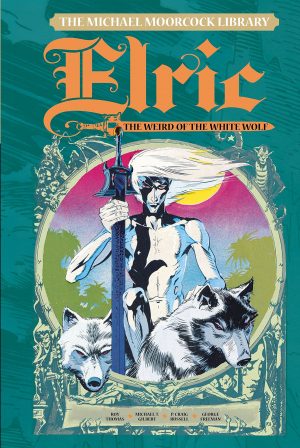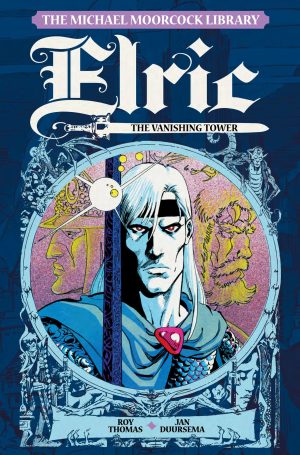Review by Ian Keogh
The first graphic novels adapting Michael Moorock’s Elric stories were issued in the 1980s, scattered around several publishers and all long out of print in 2015 when Titan began their reissue programme under the cover heading of The Michael Moorcock Library. This is the earliest of them.
When Moorcock introduced him in 1961, Elric was a fair departure for a sword and sorcery hero, not the usual musclebound brute, but a gaunt albino sorcerer, still physically capable, but also plagued by sickness, for which he requires regular treatment, and seemingly depression. He’s the ruler of Melniboné, a fantastical hidden city with very few knowing how to reach it, so the arrival of strangers unbidden is always cause for concern, and any potential invader needs to be repelled with force to maintain the city’s mystique. Despite his position, Elric has concluded his civilisation is decadent and decaying, while others see his ailments as weakness, enabling them to challenge for the throne. Roy Thomas adapts Moorcock’s novel, occasionally on the wordy side, but very faithful in capturing the intricacies and the action.
The art is a superb combination with P. Craig Russell laying the story out and inking, while Michael T. Gilbert produced the pencilled art. Both contribute to the colouring. The combination ensures the art is as close as possible to Russell’s baroque style without him actually producing everything, although it’s rare to see a montage page mid-story as here. Moorcock’s writing invites visual interpretation, and the combination of Russell and Gilbert rise to that. Their Elric is an imposing figure, exuding power despite his weakness, and the design for his throne is intriguing and memorable.
From the start Elric’s cousin Yyrkoon is a provocative presence, seemingly based on what we know of Roman Emperor Caligula, and by the midway point his intentions are very clear. Moorcock deliberately indicates how much of his cast will act, but still surprises with what prompts them to action. A lot is also carried by Elric, perhaps to be expected from a title character. In essence he’s almost supernaturally powerful, but limited by his frailty, so far from invulnerable, even if the Gods he can summon deign to help him. Other notable aspects are the clever foreshadowing of both events further into Elric of Melniboné and later Elric stories, and the manner in which time is compressed. By the end of the story a decision has been reached and Elric has acquired the sword he uses in future stories, Stormbringer, and all the difficulties it brings along with it.
This is an excellent adaptation, beautifully drawn, with the only problems indicators of the time it was produced. There are places where Thomas might have eased back on the narrative captions and dialogue, and the colouring really could have been upgraded as in places it’s too vivid, and the letratone on the sample image is another indication of age. Beyond that Moorcock’s imagination shines through, and any fantasy or sword and sorcery fan would be remiss not to investigate. Elric’s story continues in Sailor on the Seas of Fate before a sequel to this in The Dreaming City.
Thanks to @vinylscrobbler for corrections.
